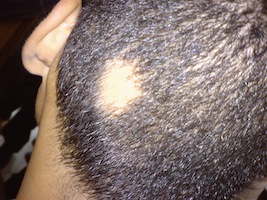 Unlike other forms of hair loss alopecia areata is completely indiscriminate in who it affects. It strikes women and men equally and even causes hair loss in young children.
Unlike other forms of hair loss alopecia areata is completely indiscriminate in who it affects. It strikes women and men equally and even causes hair loss in young children.
What is alopecia areata?
In essence, the condition is an autoimmune disease where the body literally turns on itself, attacking perfectly healthy hair cells because it mistakes them for a foreign invader like a bacteria or a virus. Literally overnight spots of hair loss can develop which may grow and join together.
In some cases the condition can eventually result in complete hair loss (known as alopecia totalis) but it may equally disappear, leaving the person with a perfectly healthy head of hair.
What causes it?
There is no known single trigger for the condition although it is thought that environmental factors are likely to blame such as diet or stress. In reality stress is more likely to be a symptom of the condition rather than the cause.
If it is possible to pinpoint the trigger then there is a slim chance of being able stop the condition from advancing but apart from this there is little that can be done. Some people respond to anti-inflammatory drugs or cortisone injections but in the vast majority of cases there is currently little that can be done other than purchasing a wig or just accepting the condition.
Can alopecia areata be treated?
There is some hope that there may be more effective treatments in development. In particular JAK inhibitors may prove to be one of the more likely solutions to the problem – researchers discovered this possibility last year whilst testing them as a treatment for rheumatoid arthritis, another autoimmune disease.
The JAK pathway carries many of the 17 genes associated with alopecia areata and it may be possible that by targeting this pathway the symptoms can be halted and reversed but it’s still early days.
